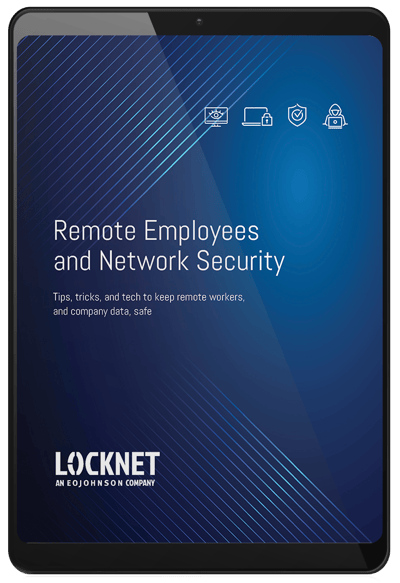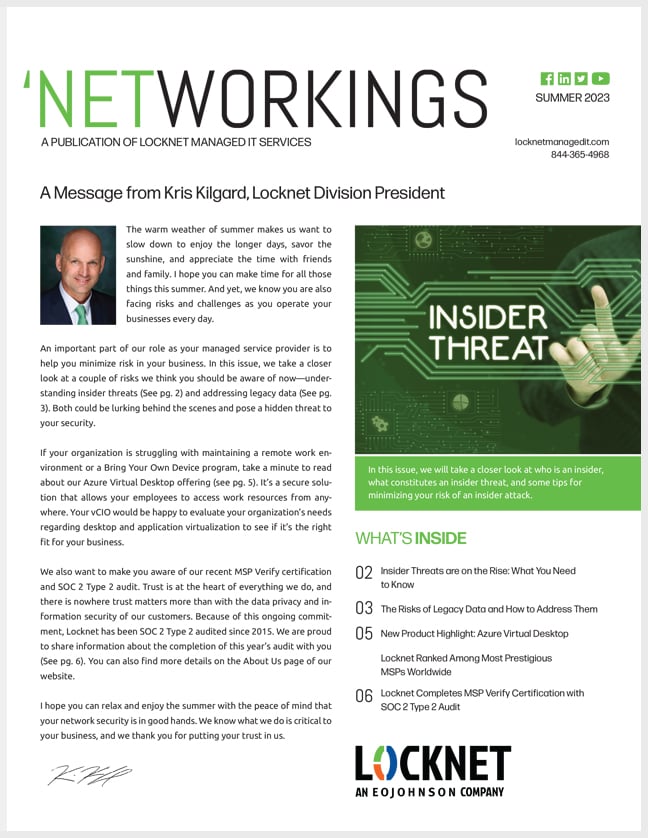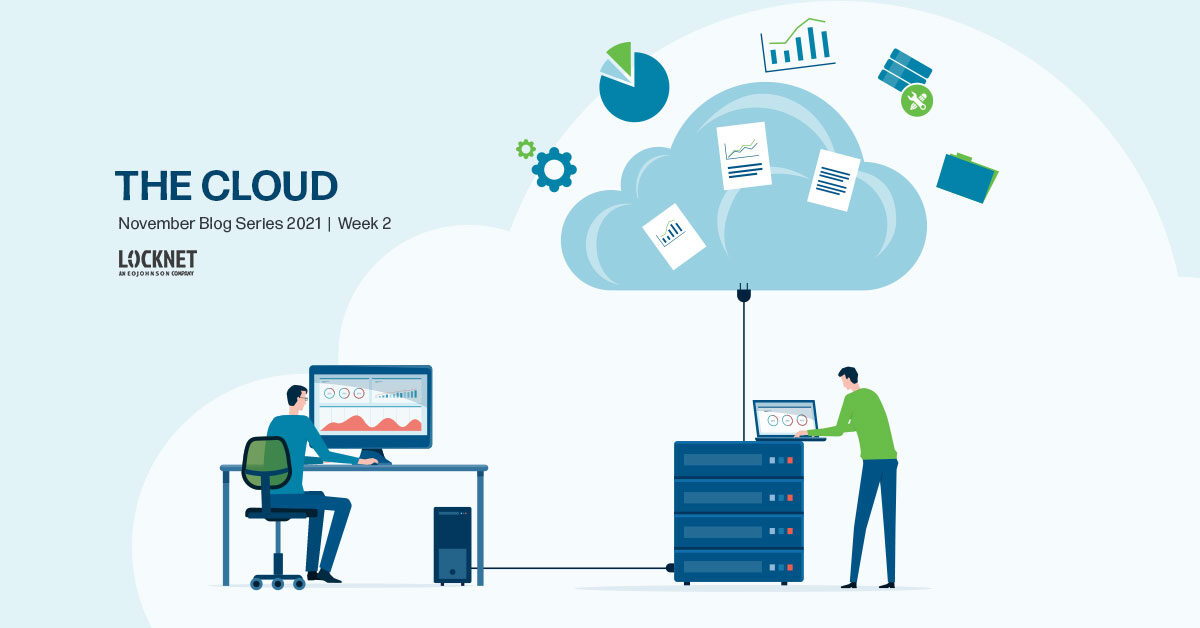How do I move to the cloud? Second, in a series from Locknet® Managed IT
Last week, we explained what exactly the cloud is and how it can support your business needs. Now that you understand the cloud and what it can do for you, perhaps you're ready for the next step: moving to the cloud. But how?
This week, we look at the steps you should take to transition your business from on-premises software to the cloud.
For some companies, managing on-premise infrastructure is one of those things they continue to do because they've always done it that way. But increasingly, organizations are becoming knowledgeable about the difference the cloud can make for them. In fact, Cisco Global Cloud Index says more than 90% of all companies have infrastructure in the cloud already, and we are on track to have more than 95% of all workloads on the cloud this year.
Joining the cloud migration
Your organizations' transition to the cloud will be made infinitely easier with the right team on your side. At Locknet® Managed IT, we work as an extension of our client's staff, and a guide, to ensure a strategic, smooth move to the cloud. When your business operations are on the line, you can't leave anything to chance. Here's how we approach cloud migration and the steps we recommend you take.
- Plan your move to the cloud.
Every move that matters requires sufficient planning, and the same holds true for moving to the cloud. Be sure to appoint a leader in your company who understands your network and the cloud to oversee the move. Planning will include auditing which applications and data must be moved to the cloud. It's also essential to plan your communications strategy, so staff understands the move to the cloud and how it will impact their work.
- Select the cloud services that are right for you.
Every business has unique needs and wants, so it's no surprise there are multiple options available for your off-site cloud environment. If your company is smaller in size, you may appreciate a single cloud environment. Enterprise-sized companies may appreciate a multiple-cloud environment and the additional flexibility it can provide.
- Ready...Set...Transfer.
Once you have selected whether you need a single cloud vendor or multi-cloud solution, it's time to move the data. You can opt to move your applications and data as they are, without necessarily changing them. Adjustments are kept to a minimum. This is known as shallow integration. If your organization wants to make full use of the services offered by the cloud vendors selected, changes must be made to the applications. This is known as deep cloud migration and can offer increased agility for your future business needs and growth.
- Conduct cloud system testing.
Testing your applications and data in the new cloud environment is key to ensuring a seamless transition. This must be done before you turn off your on-prem services. This is the time to adjust, upgrade and pivot as needed so your organization can continue running smoothly when the move to the cloud is complete.
Want to know more about the benefits of the cloud?
Now you have the answer to the question: how do I move to the cloud? If you're still on the fence about whether moving to the cloud is right for your organization, stay tuned. In our continuing series about understanding the cloud, next week we'll examine the many benefits of migrating to the cloud.
Now that you understand what moving to the cloud can mean for you, if you're ready to take the leap, reach out. Having a trusted IT partner on your side is key to a successful transition to a cloud-first business model. Our experts at Locknet® Managed IT will talk you through the process of moving to the cloud and we'll help you every step of the way. Simply contact us to get the conversation about moving to the cloud started.
Coming Up Next: Why Move to the Cloud? What are the Benefits?









